HOW TO CHOOSE THE RIGHT PACKAGING FOR YOUR APPLICATION
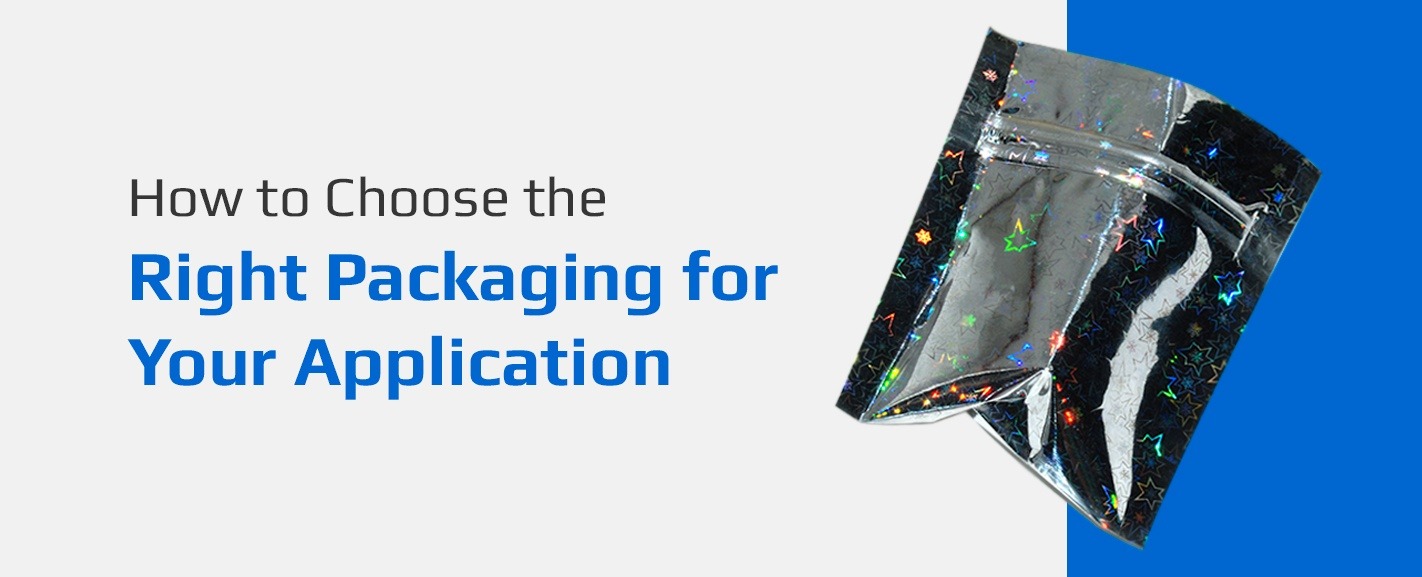
Posted: updated July 2020 Author: Jim Higgs
TABLE OF CONTENTS
What Are You Packing?
What Protection Do You Need for Your Products?
How Do You Choose Packaging Material?
How Do You Choose Packaging Configuration?
How Do You Choose the Color and Design of Your Packaging?
The packaging materials you use to transport and display your products are the first impression your customers receive of your brand. When you order custom packaging for your business, you are in control of your customer’s experience with your product from the very beginning. You can use the bags, boxes or protective materials as a powerful extension of your company’s mission and dedication to quality.
There are several factors to consider when choosing a packaging material. If you need product packaging ideas, we can help you get started. Use this product packaging guide to help you design your packaging to keep your merchandise safe and appeal to your customers.
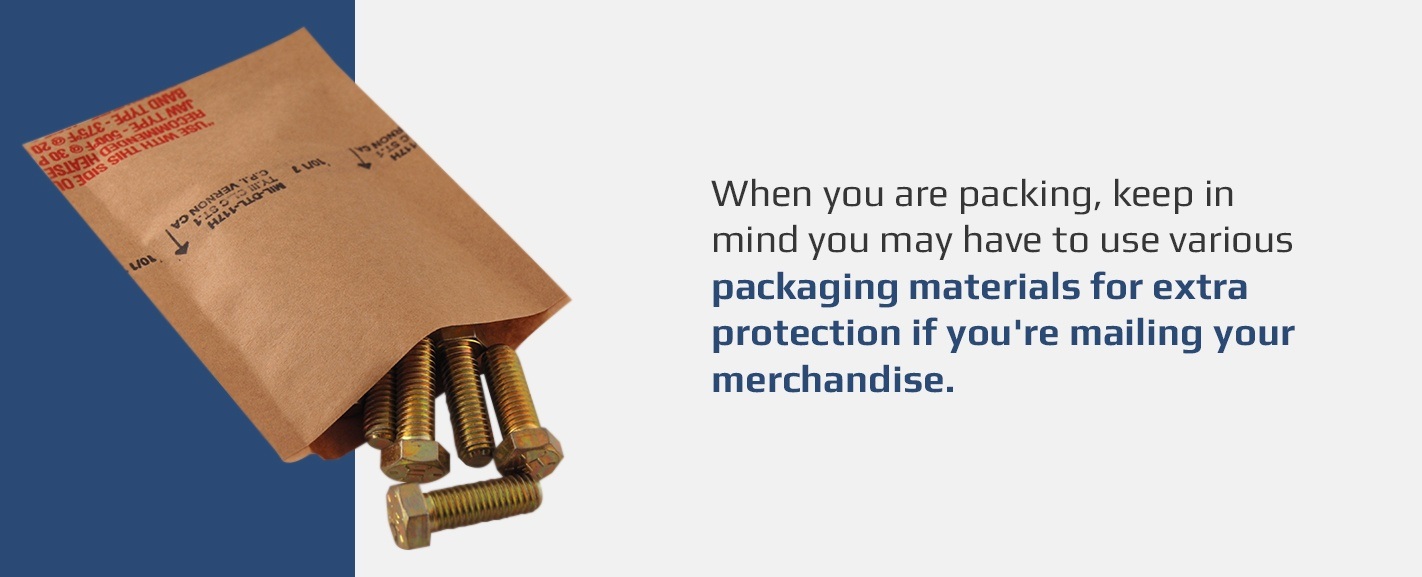
WHAT ARE YOU PACKING?
Your company’s industry plays a significant role in how you build your product packaging. Are your items going to a store or shipped to a customer who made a purchase online? Keep in mind you may have to use various packaging materials for extra protection if you’re mailing your merchandise. Consider your industry to help you determine how to choose the right packaging for your product:
- Food: The type of food you sell will help you decide what types of product packaging you need for your business. You should also consider whether you need to store your food for long-term use or if you want it ready to eat by the time it reaches the customer.
- Pharmaceuticals: If you’re in the pharmaceutical industry, you need to ensure your medicine, medical devices and vitamins are in safe, moisture-resistant containers. Whether you send your over-the-counter vitamins directly to the patient or send prescription medication to the hospital or doctor’s office, the packaging should have plenty of instructions so the doctor or patient can use your merchandise safely.
- Electronics: If you’re shipping electronics, you should make sure they’re protected from electrostatic discharge (ESD) so they function correctly. Electronics often come in clear or traslucent ESD bags or pouches so customers can quickly identify them.
- Machine parts: When shipping machine parts, you need to package each piece in individual bags even though they may all go in one box. Machine parts are often coated with rust preventative treatments such as Cosmoline and should be packed in greaseproof materials.
- Garments: When your clothes arrive at the store or your customer’s house, they need to maintain their quality during transport. The box and plastic bags you use should accommodate the weight of the clothes.
- Palletizing: To maintain the cleanliness of palletized product, a polyethylene pallet cover should be used. This type of cover will protect your product from water, dust and particulate contamination.
- Furniture: A roll of polyethylene film allows you to cover your furniture so your customer can see it while still protecting from moisture and stains.
- Hazmat materials: Protect your chemicals, epoxy or adhesives from contamination as you transport them to your destination. Foil industrial moisture barrier packaging allows you to keep the contents safe inside the bag or pouch.
- Sensitive products:In any industry — especially the pharmaceutical and hazmat industries — you may have items that require specific care. You should consider which materials would create the ideal environment for transportation if you have light-sensitive, moisture-sensitive or oxygen-sensitive merchandise in your inventory.
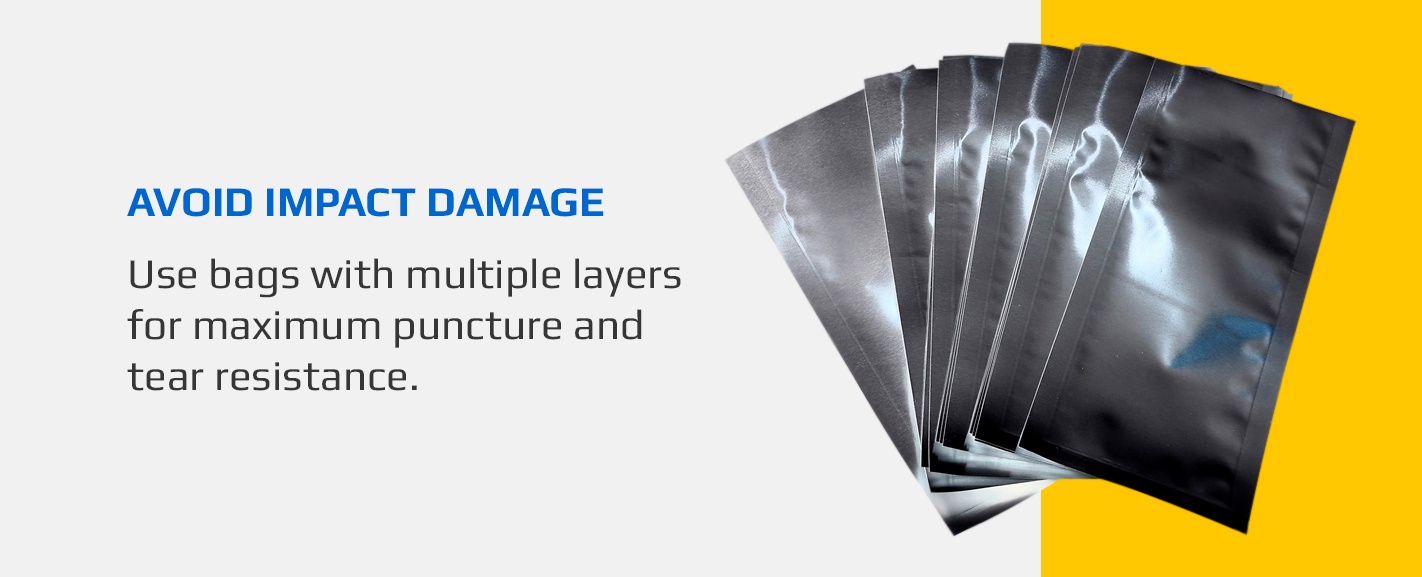
WHAT PROTECTION DO YOU NEED FOR YOUR PRODUCTS?
You need outer packaging, inner packaging, and product packaging to protect your merchandise, especially during shipping and transportation. Whether you’re shipping your merchandise directly to the client or you’re sending a bulk supply to your distributor, determine if you need to guard against the following elements:
- Grease: Use grease-resistant polykraft paper bags to protect your machine parts while in transit.
- Moisture: Your items may need protection from humidity and liquids that could infiltrate your shipping materials. Choose from a variety of moisture control packaging materials.
- Physical contamination: Small objects such as shards of glass, dirt or pest droppings could contaminate your food supply. You need a sturdy packaging material that won’t tear or break so your food can be safe.
- Impact damage: Choose packaging that stacks well to reduce impact damage, such as a two-piece rigid box or corrugated cardboard. Use bags with multiple layers for maximum puncture and tear resistance.
- Air exposure: A Mylar bag made from polyethylene and aluminum can protect your food products from oxygen and odor so they stay fresh for a more extended period.
- Heat: To control your products’ temperature and prevent contamination or spoiling, you need packaging made from an insulating material.
- Corrosion: Packaging that prevents corrosion through freezer and vacuum applications can extend the shelf life of your food items.
- Tampering: To help deter other people from tampering with your products, you can use tear-proof polyethylene or security strips for your packaging materials.
- Static electricity: ESD can cause your electronic devices to fail immediately, latently or worsen in performance. Choose packaging that will act as a protective barrier against ESD to help control the flow of electricity around your merchandise.
- Electromagnetic interference: Pack your electronic or metallic items in packaging that weakens the surrounding electromagnetic field and reduces the risk of power failure.
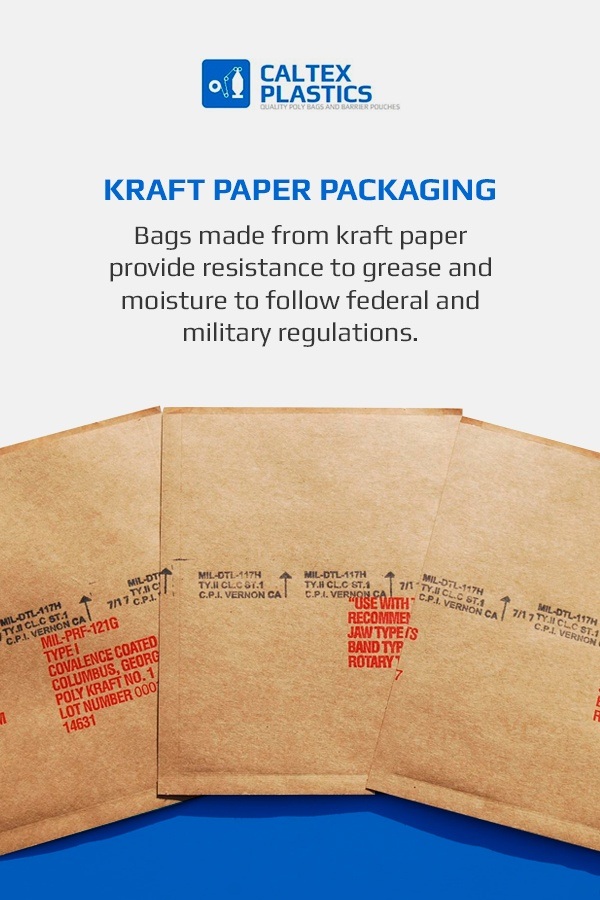
HOW DO YOU CHOOSE PACKAGING MATERIAL?
When considering what packaging material you should use for your application, place equal importance on appearance and functionality. While the visual appeal of your packaging makes an important first impression, your bags and pouches also need to guard against damage. Think about which of these materials would protect your products best:
- Opaque: You can use opaque packaging for ESD and moisture barrier protection. Foil Mylar bags can also reflect light away from your products, so heat and UV rays don’t spoil them.
- Transparent: Static-shielding transparent bags allow you to see your electronics from the outside.
- Foil: Foil barrier bags feature multiple layers, including polyethylene laminated to a sheet of aluminum foil, for long-term food storage. This packaging material guards your items against exposure to oxygen, moisture or light, and they are resistant to punctures.
- Metalized: To package your foodstuffs, cosmetics and other organic goods, use metalized bags to protect against soiling and contamination. Metalized bags contain a thin layer of metal on top of a polymer film, which creates an affordable, lightweight and visually appealing packaging material.
- Clear: These clear bags allow your customers to see your merchandise from the outside and identify items like pharmaceuticals and foodstuffs.
- Static shielding: Exposing your electronic devices to static may cause immediate failure or reduced performance. Static shielding bags protect your electronics against the buildup of static electricity, and their transparency makes them easier to transport and identify.
- Moisture barrier: Electronics are also prone to damage when they come into contact with moisture. ESD moisture barrier packaging — including bags, films and pouches — offer a low moisture vapor transmission rate (MVTR) to protect your chips, disks and drives from harm.
- Anti-static and black conductive: Like static shielding bags, anti-static and black conductive packaging protects your electronic devices and components from sparking or power failure. Like static shielding bags is that it can safeguard non-static-sensitive elements that you’ll be transporting to a static-sensitive environment. This packaging is also a low-cost alternative to static shielding.
- Mil-spec: If you distribute, ship or manufacture products for defense contractors, the military or federal government, you need to meet a higher standard of packaging requirements. Military specification flexible barrier packaging materials comply with current standards and are custom-made to accommodate your professional needs.
- Kraft paper: Bags made from polykraft paper provide resistance to grease and moisture to follow federal and military regulations.
- Polyethylene: Polyethylene is a cost-effective, versatile material you can use in nearly any industry — whether you need to package food, beverages or pharmaceutical merchandise. Low-density polyethylene (LDPE) is tough and ductile to provide heavy-duty packaging, while linear low-density polyethylene (LLDPE) provides excellent puncture and tear resistance.
- Laminate:These materials provide a wide range of applications, from electronic, pharmaceutical, food and Mil-Spec applications. They are heat-sealable and available in many forms, such as bags, tubing and roll stock.
HOW DO YOU CHOOSE PACKAGING CONFIGURATION?
Your bag configuration considers the shape and features of your packing materials. With custom product packaging, you can choose a variety of sizes to accommodate the wide selection of items in your inventory. You can also change the shape of your pouch to make it fit around your merchandise or better reflect your company’s brand. Check out these types of product packaging to find your ideal bag configuration:
- Stand-up: You can have your bags stand upright to provide easy placement in a store or kitchen pantry. The gusset of the bag folds out to allow it to stand upright.
- Bottom gusset: If you have larger, three-dimensional products, use a bottom gusset bag to create a form-fitting packaging design that gives you more space to display your item’s information.
- Side gusset: Instead of putting the gusset on the bottom, you can have a bag where both sides of the opening fold. With this configuration, the food or powder inside the pouches determines the shape of your packaging. A bag with a side gusset tends to take up less space on the shelf than bottom gusset bags.
- Zipper pouches: Pouches with zippers allow your customers to open and close the bag with ease. Available in most materials, these pouches protect food from getting stale or from attracting bugs.
- Flat pouches: Flat pouches are the most common form but must be heat-sealed for the final closure.
- Multi-pocket: If you need to ship multiple components for your product, consider a multi-pocket bag to keep all the pieces together.
- Tubing:Tubing is ideal for multiple applications where you can easily cut to length to make bags quickly.
- Roll stock:When covering large equipment, use roll stock to create your own huge shrouds and bags.
- Hole punching: You can punch holes into your bags or pouches to allow them to hang on a rack in the store.
- Tear notching: You can also add a slit that your customers use to tear off the top of your bag without scissors.
- Die-cutting: Use dies to create shaped bags for more self appeal or ease of use of your product.
- Mono-layer: This configuration involves a single film layer of LDPE, LLDPE or HDPE that you can seal with a twist tie, zipper, tape or heat seal.
- Multi-layer: As opposed to a mono-layer bag, a multi-layer bag uses several layers of plastic and aluminum.
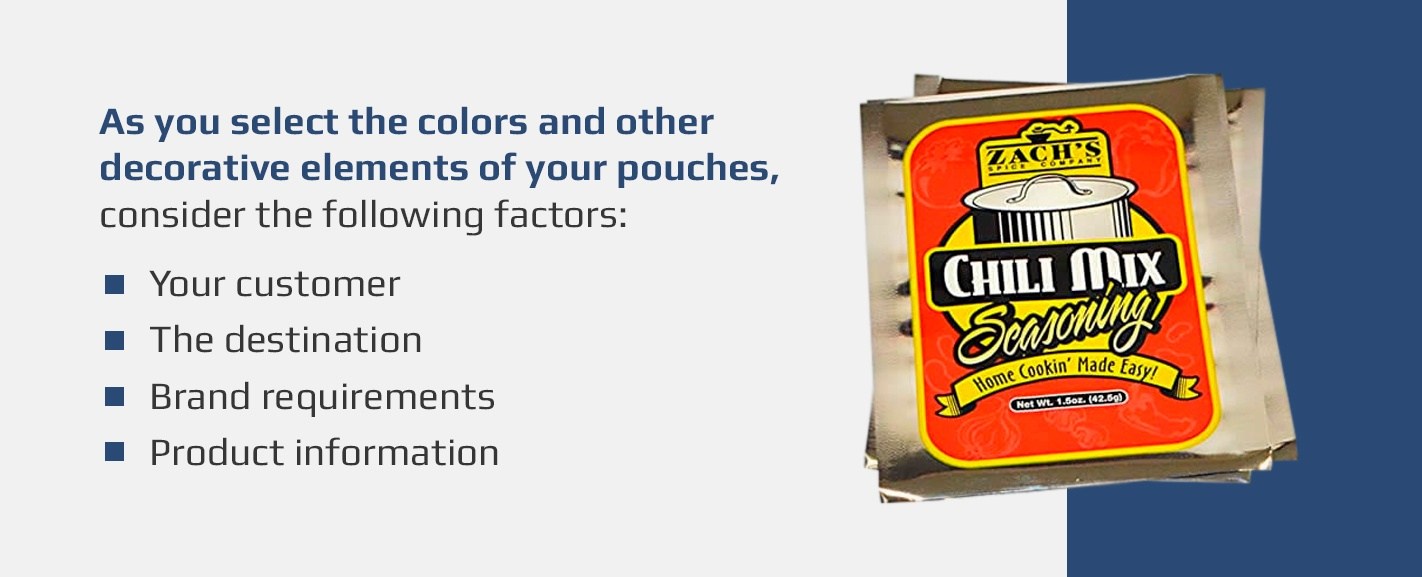
HOW DO YOU CHOOSE THE COLOR AND DESIGN OF YOUR PACKAGING?
The design you choose for your custom packaging bags should be a reflection of your brand. As you select the colors and other decorative elements of your pouches, consider the following factors:
- Your customer:Design your packaging to attract the attention of your ideal customer. If you manufacture children’s cereal, you would want to use bright colors and big letters. If your audience cares about the environment, invest in sustainable materials. Know your target audience before settling on a design that meets their needs and makes your merchandise stand out in a store. For help with packaging design work, research product packaging examples online to see how other companies package similar items.
- The destination: Are you sending your product to a store or directly to your customers? Inventory that you ship to a distributor will need to have colors and configurations that set your items apart on the shelf. If you’re shipping it to individual customers, consider the aesthetic appearance of the outer layer of the packaging material besides your product’s container.
- Brand requirements: Connect a unique item in your inventory to your company as a whole by designing the outside with your logo or brand colors. Play with your packaging design online by trying out different fonts and wording. Check out other design examples from packaging manufacturers to see how you can make your packaging complement your company’s values.
- Product information: Depending on your industry, you may have to follow packaging design guidelines to make sure your merchandise is legitimate. When applicable, you should include nutrition facts, a bar code, or instructions for use.
REQUEST A CUSTOM PACKAGING QUOTE FROM CALTEX PLASTICS
At Caltex Plastics Inc., we specialize in manufacturing custom packaging for industrial and commercial use. We supply and create plastic bags, tubing, pouches and other barrier-forming materials that protect your items and prepare them for shipment and distribution.
If you need packaging for your product, we’re committed to providing you the highest-quality packing materials, at the most affordable prices in the shortest amount of time possible. To request a custom packing quote from us, fill out a contact form, and we’ll walk you through the packaging design process.